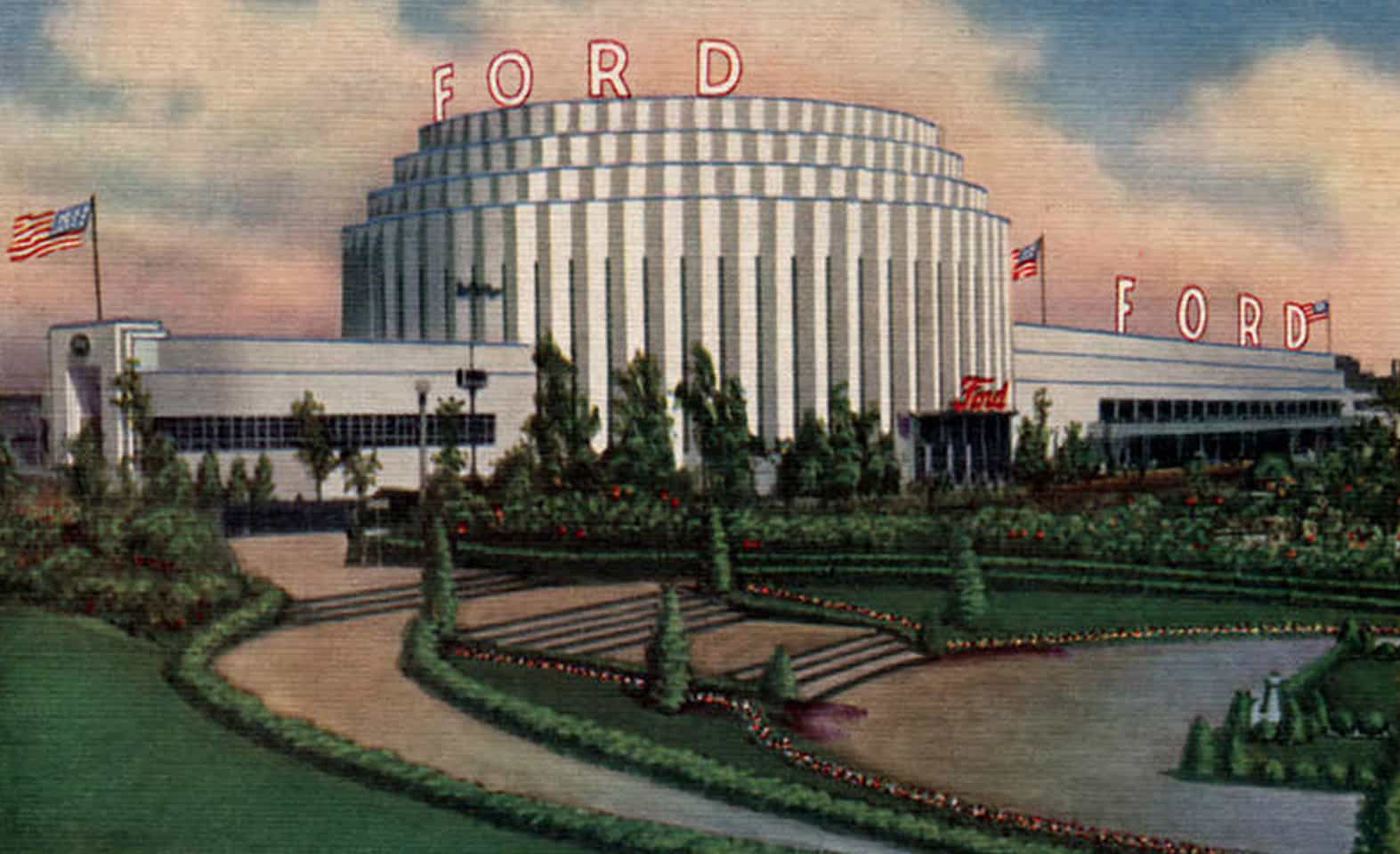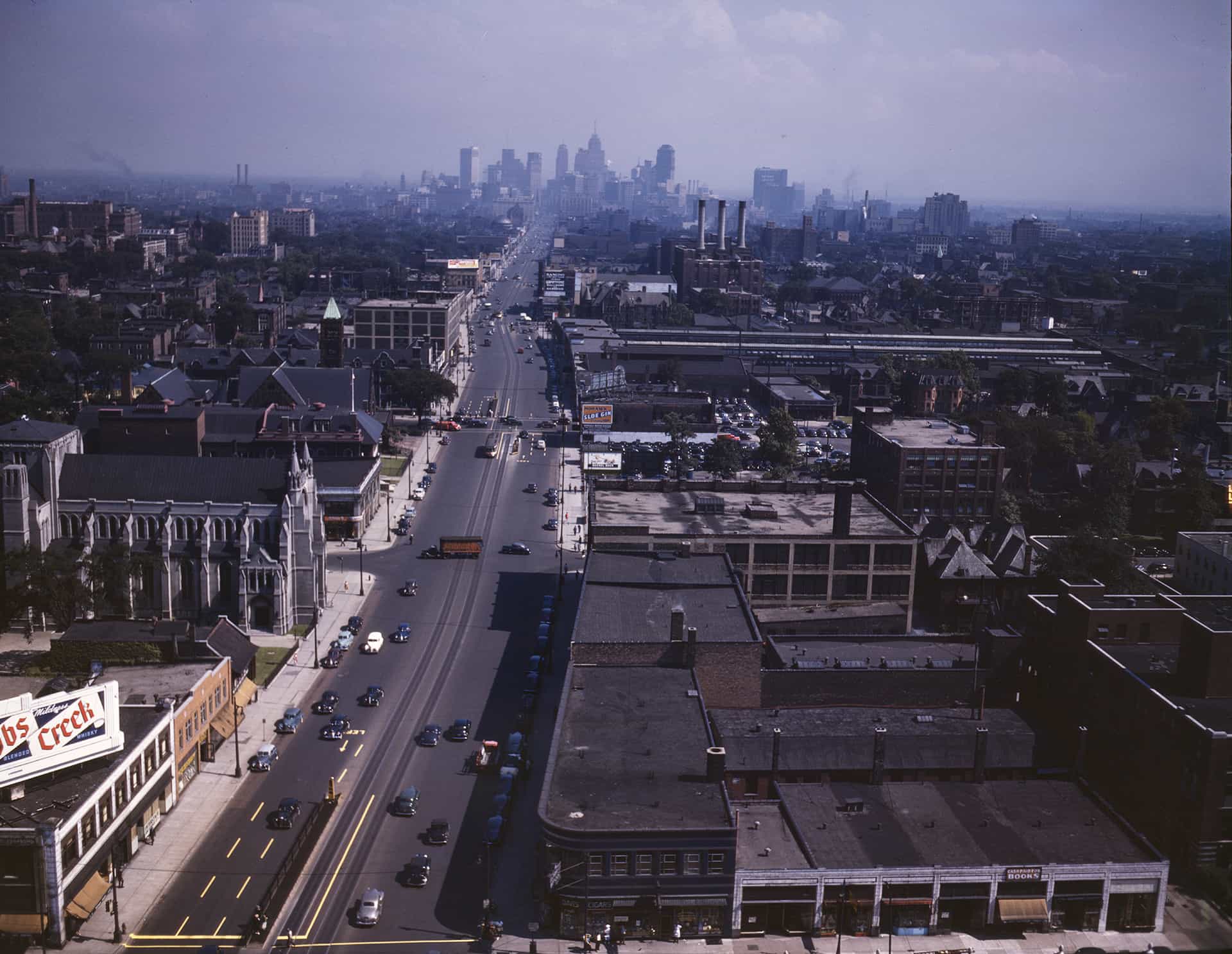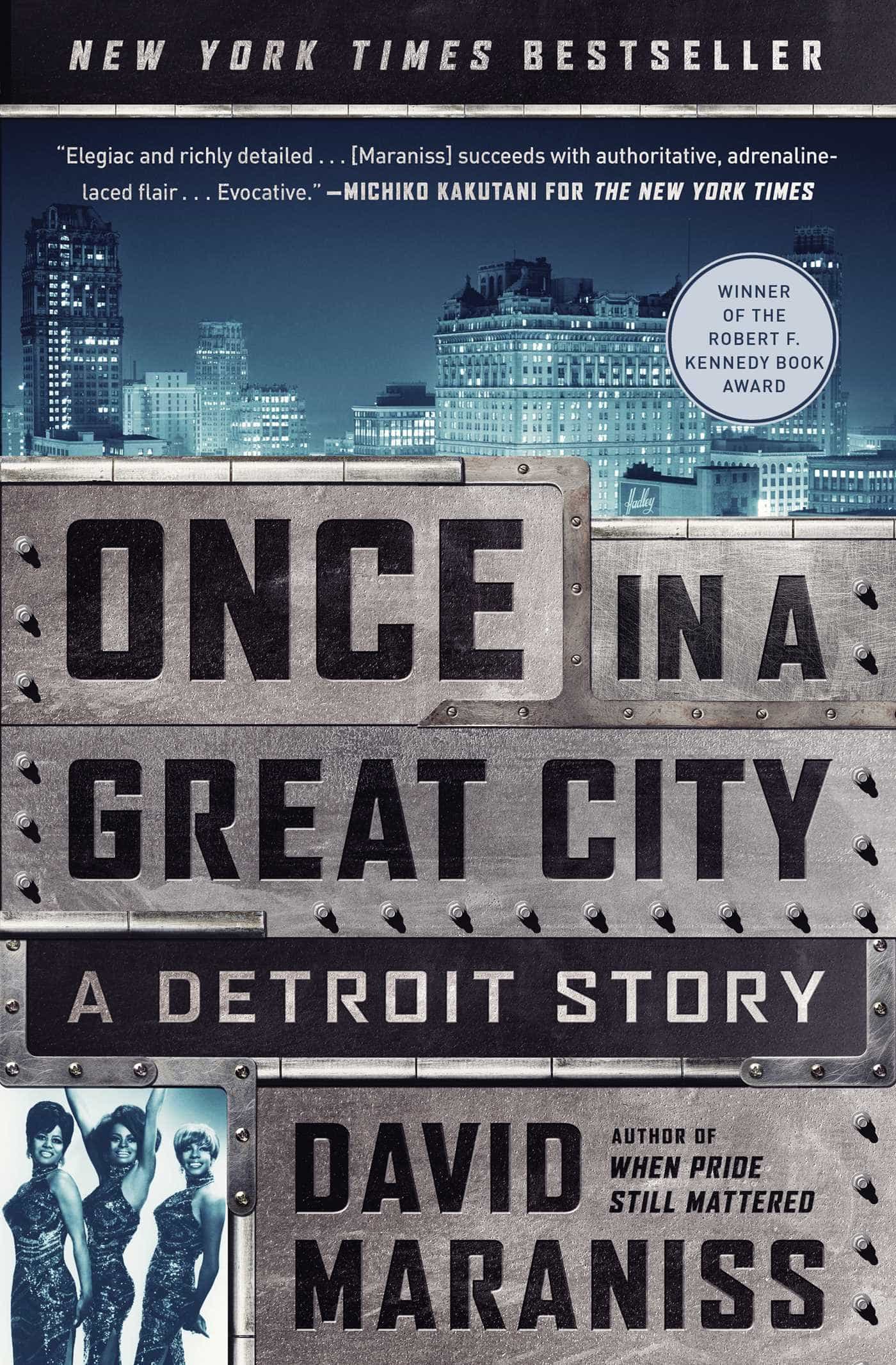“Cars were selling at a record pace. Motown was rocking. Labor was strong. People were marching for freedom. The present was calling Detroit a “herald of hope.” It was a time of uncommon possibility and freedom when Detroit created wondrous and lasting things. But life can be luminescent when it is most vulnerable.”
Once in a Great City
- Robert F. Kennedy Book Award
- A Best Book of 2015 (The Economist)
Detroit in 1963 is on top of the world. The city’s leaders are among the most visionary in America: Grandson of the first Ford; Henry Ford II; Motown’s founder Berry Gordy; the Reverend C.L. Franklin and his daughter, the incredible Aretha; Governor George Romney, Mormon and Civil Rights advocate; car salesman Lee Iacocca; Police Commissioner George Edwards; Martin Luther King. The time was full of promise. The auto industry was selling more cars than ever before. Yet the shadows of collapse were evident even then. “Elegiac and richly detailed” (The New York Times), in Once in a Great City David Maraniss shows that before the devastating riot, before the decades of civic corruption and neglect, and white flight; before people trotted out the grab bag of rust belt infirmities and competition from abroad to explain Detroit’s collapse, one could see the signs of a city’s ruin. Detroit at its peak was threatened by its own design. It was being abandoned by the new world economy and by the transfer of American prosperity to the information and service industries. In 1963, as Maraniss captures it with power and affection, Detroit summed up America’s path to prosperity and jazz that was already past history. “Maraniss has written a book about the fall of Detroit, and done it, ingeniously, by writing about Detroit at its height….An encyclopedic account of Detroit in the early sixties, a kind of hymn to what really was a great city” (The New Yorker).
-
Once in a Great City – A Detroit Story
“David Maraniss is a journalist’s journalist… the book explores the optimism that existed in those days and the signs of major problems to come. It’s a fascinating political, racial, economic and cultural tapestry.”
-
Once in a Great City – A Detroit Story
“Maraniss has written a book about the fall of Detroit, and done it, ingeniously, by writing about Detroit at its height, Humpty Dumpty’s most poignant moment being just before he toppled over…”
-
Once in a Great City – A Detroit Story
“Once in a Great City is incandescent. Through evocative writing and prodigious research, David Maraniss offers us an unforgettable portrait of 1963 Detroit, muscular and musical, during the early days of Motown and the Mustang. This book is at once the chronicle of a city during its last fine time and also a classic American story of promise and loss.”

Gone
The ninth of November 1962 was unseasonably pleasant in the Detroit area. It was an accommodating day for holiday activity at the Ford Rotunda, where a company of workmen were installing exhibits for the Christmas Fantasy scheduled to open just after Thanksgiving. Not far from a main lobby display of glistening next-model Ford Thunderbirds and Galaxies and Fairlanes and one-of-a-kind custom dream cars, craftsmen were constructing a life-size Nativity scene and a Santa’s North Pole workshop surrounded by looping tracks of miniature trains and bountiful bundles of toys. This quintessentially American harmonic convergence of religiosity and consumerism was expected to attract more than three-quarters of a million visitors before the season was out, and for a generation of children it would provide a lifetime memory—walking past the live reindeer Donner and Blitzen, up the long incline toward a merry band of hardworking elves, and finally reaching Santa Claus and his commodious lap.
-
Once in a Great City – A Detroit Story
“Elegiac and richly detailed… Maraniss’s evocative book provides a wistful look back at an era when those cracks were only just beginning to show, and the city still seemed a place of “uncommon possibility” and was creating “wondrous and lasting things.”
-
Once in a Great City – A Detroit Story
“Captivating… Maraniss hears the joyous sound of a city suddenly, improbably filled with hope… Maraniss asks himself what in the city has lasted, a question that often haunts former Detroiters. The songs, he decides. Not the reforms, not the dream of racial justice, not the promise of a Great Society, but the wonderfully exuberant songs that came pouring out of Berry Gordy’s studio. That’s the tragedy at the core of this gracious, generous book. All that remains of the hopeful moment Maraniss so effectively describes is a soundtrack. And that isn’t nearly enough.”
-
Once in a Great City – A Detroit Story
“…Motown is clearly where Maraniss’s heart is, and it is where his materials—music, race, civil rights—come together most naturally… You finish Once in a Great City feeling mildly shattered, which is exactly as it should be.”

